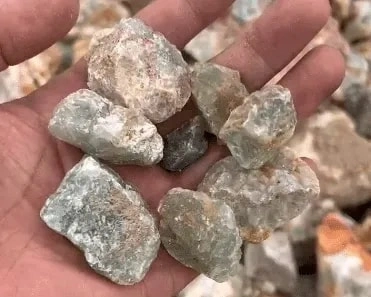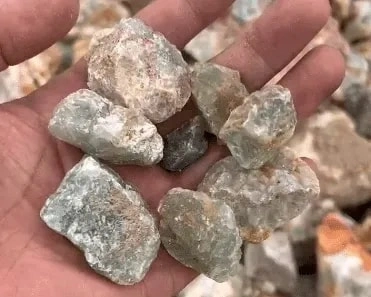The whole process of customs declaration and supervision of imported lead and zinc ores and their concentrates

Lead, as an important metal, in the electrical industry, it supports the stable conduction of electric circuits; in the machinery industry, it is the basic material for manufacturing parts.
Chengye International Logistics has been very skillful in the operation of customs clearance of imported lead and zinc ores and their concentrates.
I. Pre-importation Preparation: Necessary Documents and Declaration Points
(A) the necessary documents
Trade contract
Commercial invoice
Packing list
Bill of Lading
Quality certificate (including composition analysis report)
Radioactive material test report
Certificate of origin
(B) declaration of information points
Name: the name of the goods must be filled in accurately to avoid ambiguity, so as not to affect the customs declaration process.
Processing methods: such as crushing, grinding, magnetic separation, gravity separation, flotation, screening, etc.. Different processing methods will affect the nature and categorization of the goods, which in turn will affect the customs declaration procedures.
Composition content: Detailed description of the proportion of various components in lead and zinc ores and their concentrates, which is crucial for determining the value of the goods and the applicable tax rate.
Source: including the country of origin and the name of the mining area, which helps to trace the source of the goods and is important for quality control and trade management.
Date of signing: Record the time of signing the trade contract, which may play a key role in some trade disputes or policy application.
Pricing method: such as formula pricing, spot price, etc., to clarify the way of determining the price, which is convenient for the Customs to carry out price audit.
Settlement: indicate whether the need for secondary settlement, which is related to the payment of trade payments and financial accounting.
Pricing date: to determine the price calculation of the time node, for price determination and cost accounting has an important impact.
Demurrage situation: the demurrage and demurrage declaration status, which involves the cost of transportation and trade cost accounting.

Second, the import declaration process: rigorous and orderly progress
Data collation and verification: carefully check all kinds of information required for import to ensure accuracy, which is the basis for smooth customs clearance.
Arrangement of foreign shipment: Coordinate with foreign suppliers to send the goods to the designated ports in China to ensure that the goods are transported on time.
Customs declaration and inspection synchronization: submit declarations to the customs and inspection and quarantine departments, and go through the relevant procedures in accordance with the stipulated process.
Customs valuation link: Customs carries out price audit according to the condition of the goods and issues the tax bill, and the importer needs to pay close attention to the result of the valuation.
Tax payment: The importer pays the corresponding customs duty and VAT according to the amount of the tax bill, and completes the obligation of tax payment.
Customs inspection and sampling: Customs carries out on-site inspection and takes samples for testing to ensure that the goods comply with relevant standards and regulations.
Notice of release: If the goods meet the requirements, the customs will release the goods and the importer can carry out the subsequent pick-up operation.
Handle the bill of lading: The importer handles the lading formalities and picks up the goods, paying attention to the formalities and requirements in the lading process.
Delivery to the designated location: transport the goods to the final destination in the country, to ensure the safe delivery of goods.
Laboratory testing and certificate issuance: wait for the test results of the laboratory, if qualified, the relevant certificate will be issued, which is a prerequisite for the legal sale or use of goods.
Enterprise sales or use: importers can sell or put the goods into use according to their own needs, to achieve the commercial value of the goods.
Third, the inspection and supervision mode: two situations analyzed
(A) apply for quality certificate process
When the import consignee or agent hopes that the Customs issued a quality certificate, you need to apply to the Customs. Customs will be imported lead and zinc ores and concentrates for on-site inspection and quarantine, followed by on-site sampling, laboratory testing, and ultimately issued a quality certificate. This process ensures the authoritative determination of the quality of the goods.
(B) do not apply for quality certificates
If the import consignee or agent does not need a certificate of quality issued by the Customs and Excise Department in the implementation of on-site inspection and quarantine of goods and qualified, will directly release the goods. However, it should be noted that, whether or not to apply for a certificate of quality, the Customs will be sure to carry out on-site inspection and quarantine, covering radioactivity detection, quarantine treatment of foreign inclusions, detection of suspected adulteration of solid wastes, etc., in order to protect the domestic environment and market security.






